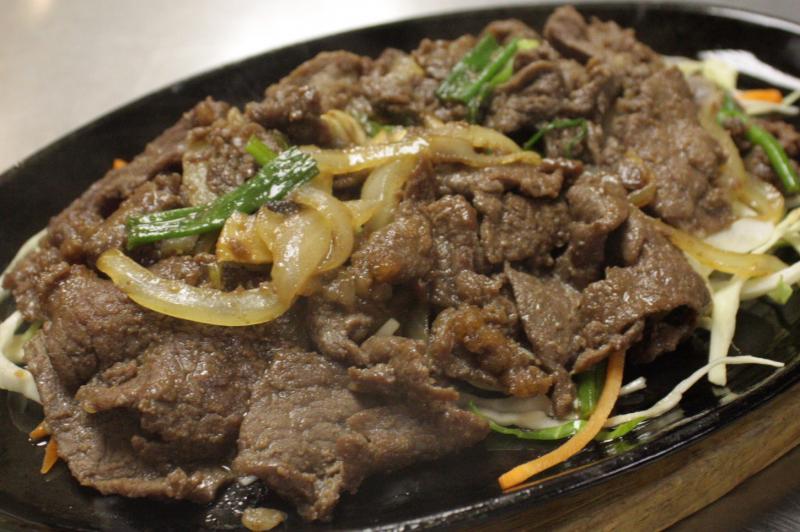FOR SICHUAN: FULOON
You don't go to Fuloon for
the atmosphere, which is classic suburban Chinese restaurant (think: elevator
music, slippery "leather" booths, and a fish tank). Nor do you go
because it's convenient, as Malden is a good 20 minute drive north of the city.
You go for the chili burn, the citrusy numbing sensation of ma la, and the vinegar
punch, all of which make frequent appearances on the restaurant's largely
Sichuan menu.Chef Zhang Wenxue's ma po tofu is some of the best you'll taste
anywhere, including in its hometown of Chengu: rich and  intense,
custard-smooth, and mouth-numbing with the intensity of its Sichuan
peppercorns. But that's just one of many must-order dishes. Our best advice:
get a group together and share as many of the following as can fit on the lazy
Susan: Bang Bang Chicken, Wonton's with Special Hot Sauce, Jingdu Pork Pancake,
Starch Noodles with Pork, Mandarin Cabbage with Spicy and Sour (the sleeper hit
of the menu), Szechuan-Style Steamed (read: swimming in chili oil) Beef, Kan
Shue String Beans, Hot Diced Chicken Szechuan Style, Wok-Baked Beef, and Bean
Curd Knots with Pork Belly.
intense,
custard-smooth, and mouth-numbing with the intensity of its Sichuan
peppercorns. But that's just one of many must-order dishes. Our best advice:
get a group together and share as many of the following as can fit on the lazy
Susan: Bang Bang Chicken, Wonton's with Special Hot Sauce, Jingdu Pork Pancake,
Starch Noodles with Pork, Mandarin Cabbage with Spicy and Sour (the sleeper hit
of the menu), Szechuan-Style Steamed (read: swimming in chili oil) Beef, Kan
Shue String Beans, Hot Diced Chicken Szechuan Style, Wok-Baked Beef, and Bean
Curd Knots with Pork Belly.
 intense,
custard-smooth, and mouth-numbing with the intensity of its Sichuan
peppercorns. But that's just one of many must-order dishes. Our best advice:
get a group together and share as many of the following as can fit on the lazy
Susan: Bang Bang Chicken, Wonton's with Special Hot Sauce, Jingdu Pork Pancake,
Starch Noodles with Pork, Mandarin Cabbage with Spicy and Sour (the sleeper hit
of the menu), Szechuan-Style Steamed (read: swimming in chili oil) Beef, Kan
Shue String Beans, Hot Diced Chicken Szechuan Style, Wok-Baked Beef, and Bean
Curd Knots with Pork Belly.
intense,
custard-smooth, and mouth-numbing with the intensity of its Sichuan
peppercorns. But that's just one of many must-order dishes. Our best advice:
get a group together and share as many of the following as can fit on the lazy
Susan: Bang Bang Chicken, Wonton's with Special Hot Sauce, Jingdu Pork Pancake,
Starch Noodles with Pork, Mandarin Cabbage with Spicy and Sour (the sleeper hit
of the menu), Szechuan-Style Steamed (read: swimming in chili oil) Beef, Kan
Shue String Beans, Hot Diced Chicken Szechuan Style, Wok-Baked Beef, and Bean
Curd Knots with Pork Belly.FOR CANTONESE SEAFOOD: PEACH FARM
Thanks to its late hours (open 'til 3 a.m.),
this bustling subterranean Chinatown staple doubles a hangout for off-work
chefs. (It's also a good idea to go late at night, because eating during
primetime often means crowding around the entryway  while you wait an hour or
more for a table.) But the real draw is swimming in the restaurant's fish
tanks: live fish and shellfish that are no sooner plucked from the water than
they appear on your plate. Live, head-on, in-the-shell salt-and-pepper shrimp
are a must, and you know they're fresh because their availability is day-to-day
(call the restaurant after 1 p.m. to check if they'll have them that night).
The fry job is so expertly done that the two-bite crustaceans boast a light,
delicate crunch that you might not expect from shell-on seafood. Other good
choices include Cantonese classics like lobster with ginger-scallion sauce and
clams with black bean sauce
while you wait an hour or
more for a table.) But the real draw is swimming in the restaurant's fish
tanks: live fish and shellfish that are no sooner plucked from the water than
they appear on your plate. Live, head-on, in-the-shell salt-and-pepper shrimp
are a must, and you know they're fresh because their availability is day-to-day
(call the restaurant after 1 p.m. to check if they'll have them that night).
The fry job is so expertly done that the two-bite crustaceans boast a light,
delicate crunch that you might not expect from shell-on seafood. Other good
choices include Cantonese classics like lobster with ginger-scallion sauce and
clams with black bean sauce
 while you wait an hour or
more for a table.) But the real draw is swimming in the restaurant's fish
tanks: live fish and shellfish that are no sooner plucked from the water than
they appear on your plate. Live, head-on, in-the-shell salt-and-pepper shrimp
are a must, and you know they're fresh because their availability is day-to-day
(call the restaurant after 1 p.m. to check if they'll have them that night).
The fry job is so expertly done that the two-bite crustaceans boast a light,
delicate crunch that you might not expect from shell-on seafood. Other good
choices include Cantonese classics like lobster with ginger-scallion sauce and
clams with black bean sauce
while you wait an hour or
more for a table.) But the real draw is swimming in the restaurant's fish
tanks: live fish and shellfish that are no sooner plucked from the water than
they appear on your plate. Live, head-on, in-the-shell salt-and-pepper shrimp
are a must, and you know they're fresh because their availability is day-to-day
(call the restaurant after 1 p.m. to check if they'll have them that night).
The fry job is so expertly done that the two-bite crustaceans boast a light,
delicate crunch that you might not expect from shell-on seafood. Other good
choices include Cantonese classics like lobster with ginger-scallion sauce and
clams with black bean sauce












